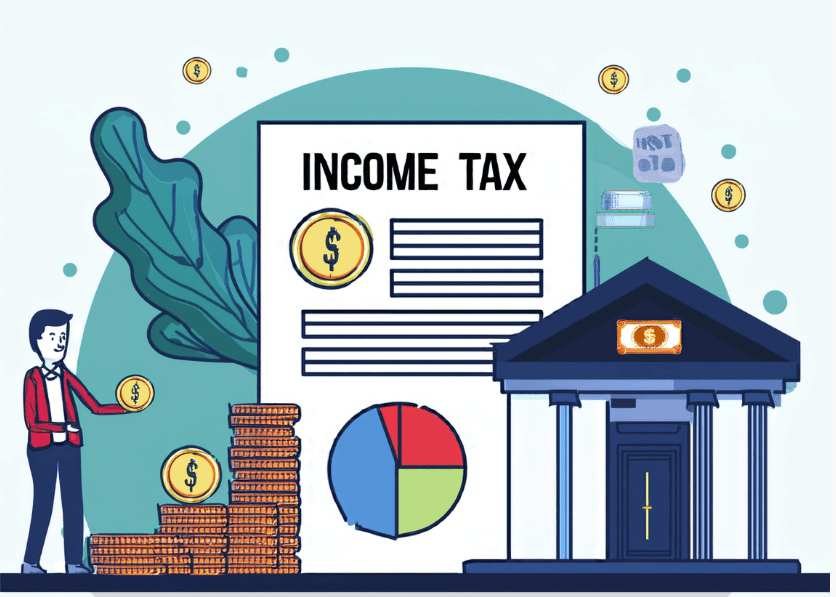The New Tax Regime, introduced under Section 115BAC, offers simplified tax slabs with lower rates but restricts many traditional deductions. While it became the default regime from FY 2023–24, taxpayers still have the flexibility to switch to the old regime if it suits them better.
Many believe that the New Regime doesn’t allow any deductions. However, that’s not entirely true. You can still claim a few essential deductions. This article breaks down what deductions are allowed, which ones are disallowed, and how to make the most of the new structure.
Deductions You Can Claim in the New Tax Regime
Despite its limitations, the New Regime provides specific tax-saving opportunities. Let’s explore them one by one.
1. Standard Deduction – Section 16(ia)
- Amount: ₹75,000
- Who Can Claim: Salaried individuals and pensioners
The Finance Act 2023 enhanced the standard deduction from ₹50,000 to ₹75,000. The Income Tax Department automatically applies this deduction when you file returns.
🔹 This helps reduce taxable income without needing any investment proof.
2. Family Pension Deduction
- Amount: Lower of ₹15,000 or 1/3rd of family pension
- Eligibility: Individuals receiving family pension
Although most exemptions are gone in the New Regime, this deduction continues to offer relief to family pensioners.
3. Employer’s Contribution to NPS – Section 80CCD(2)
- Limit:
- 14% of salary (basic + DA) for Central Government employees
- 10% for others
This deduction applies only to the employer’s contribution. You cannot claim your voluntary NPS contributions under Section 80CCD(1B) in the new regime.
4. Agniveer Corpus Fund – Section 80CCH
- Applies to individuals enrolled under the Agnipath Scheme.
- You can claim the full deduction on government contributions to the Agniveer Corpus Fund.
5. Home Loan Interest for Let-Out Property – Section 24(b)
- Allowed: Yes, but only for let-out or deemed let-out property.
- Not Allowed: For self-occupied properties.
If you’ve rented out your property or it’s deemed let-out, you can claim the entire interest paid on the home loan.
6. Additional Employee Cost Deduction – Section 80JJAA
- Eligibility: Taxpayers in business who hire new employees
- Deduction: 30% of additional employee cost for three years
This section encourages job creation by offering tax incentives to businesses that expand their workforce.
7. Certain Exempt Allowances & Perquisites Still Apply
Although most allowances are eliminated, the government retains a few key exemptions:
| Allowance/Exemption | Status |
|---|---|
| Transport allowance for disabled employees | ✅ Allowed |
| Conveyance allowance for official travel | ✅ Allowed |
| Tour/transfer allowance | ✅ Allowed |
| Gratuity (Sec 10(10)) | ✅ Allowed |
| Leave encashment on retirement | ✅ Allowed |
| Retrenchment compensation | ✅ Allowed |
| Employer gift up to ₹5,000 | ✅ Allowed |
Deductions Not Permitted Under the New Tax Regime
You cannot claim popular deductions available under the old regime. The following deductions are not applicable if you choose the New Regime:
| Disallowed Deductions | Section(s) |
|---|---|
| Investments (LIC, PPF, ELSS) | 80C |
| Health insurance premiums | 80D |
| Education loan interest | 80E |
| Donations to charities | 80G |
| Disability deductions | 80DD, 80U |
| House Rent Allowance | 10(13A) |
| Leave Travel Allowance | 10(5) |
| Professional/Entertainment allowance | Section 16 |
| Self-occupied home loan interest | 24(b) |
Summary Table: What’s In and What’s Out?
| Benefit | New Regime Status |
|---|---|
| Standard Deduction (₹75,000) | ✅ Allowed |
| Family Pension Deduction | ✅ Allowed |
| Employer’s NPS Contribution (80CCD(2)) | ✅ Allowed |
| Agniveer Corpus Fund Contribution (80CCH) | ✅ Allowed |
| Let-Out Home Loan Interest | ✅ Allowed |
| Section 80JJAA (New Employment) | ✅ Allowed |
| Section 80C / 80D / 80G | ❌ Not Allowed |
| HRA, LTA, Professional Tax | ❌ Not Allowed |
Rebate Under Section 87A – Up to ₹7 Lakh Tax-Free Income
If your net taxable income under the new regime is up to ₹7 lakh, you qualify for a 100% rebate under Section 87A.
- Result: Zero tax liability
- This makes the new regime more attractive for middle-class salaried individuals with fewer deductions.
Should You Opt for the New Tax Regime?
Let’s simplify the decision:
Choose the New Regime if:
- You don’t invest much in tax-saving instruments.
- You prefer lower tax rates and minimal documentation.
- Your income is below ₹7 lakh and you want zero tax.
Stick with the Old Regime if:
- You claim significant deductions (80C, 80D, HRA, LTA, etc.).
- You pay housing loan EMIs for self-occupied property.
- Your employer provides HRA or LTA benefits.
👉 Use an online tax regime comparison calculator to find what suits you best.
Final Thoughts
The New Tax Regime is clean and simple, but not deduction-free. Understanding its allowed deductions helps you plan better and avoid missing out on legitimate tax benefits. If your finances align with the new structure, it can simplify your tax filing and reduce your liability.
No. Deductions like PPF, LIC premiums, and ELSS under Section 80C are not allowed.
No. Health insurance premium deductions under Section 80D are not permitted in the new regime.
Only interest on home loans for let-out properties is allowed under Section 24(b). Self-occupied home loan interest is disallowed.
Yes. Salaried individuals and pensioners get a standard deduction of ₹75,000.
Yes. Salaried individuals can switch each year. Business income earners can switch only once.
Yes. If your net income is up to ₹7 lakh, you can avail full rebate under Section 87A and pay zero tax.
Yes. You can claim employer’s NPS contribution under Section 80CCD(2), up to 10% (or 14% for central govt employees) of your salary.

